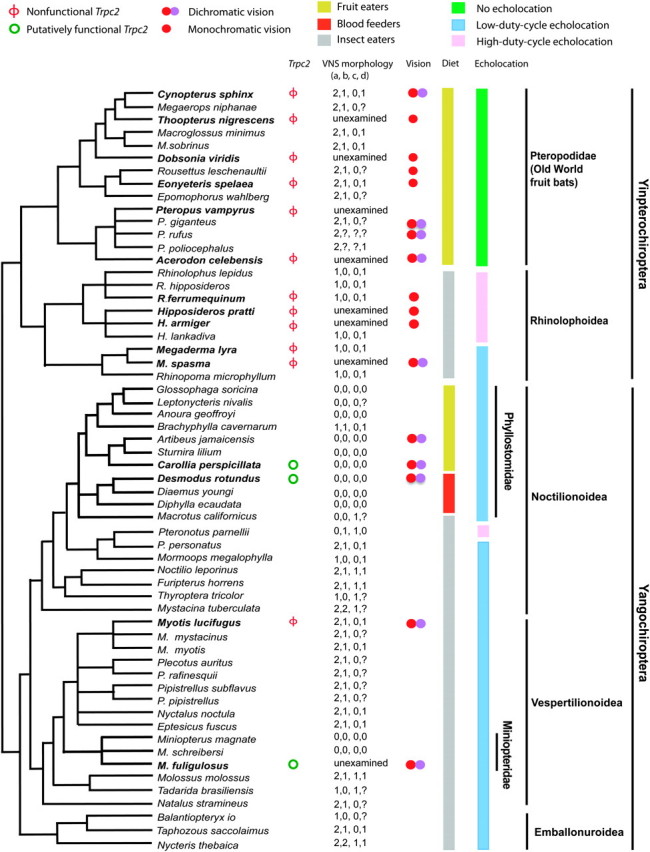FIG. 2.

An established phylogeny of all bats with genetic or morphological data about theVNS. Information about Trpc2 functionality, VNS morphology, color vision, echolocation call type, and dietary preference is presented whenever available. Species in bold are those sequenced in this study. The VNS morphology is represented by four characters: “a” represents vomeronasal epithelial tube (0, well developed; 1, rudimentary; 2, absent), “b” indicates vomeronasal cartilage (0, “J”, “C”, “U” or “O” shaped; 1, bar shaped; 2, absent), “c” signifies nasopalatine duct (0, present; 1, absent), and “d” denotes accessory olfactory bulb (0, present; 1, absent). “?” represents missing data. Both the data and coding of the VNS morphology are from Wible and Bhatnagar (1996). Information about bat color vision is from Zhao, Rossiter, et al. (2009) and that about echolocation and diet is from Neuweiler (2000).
